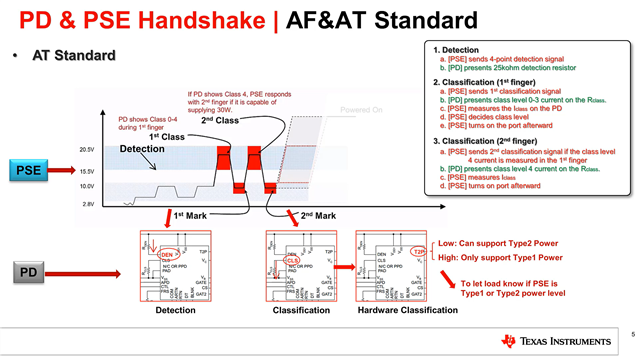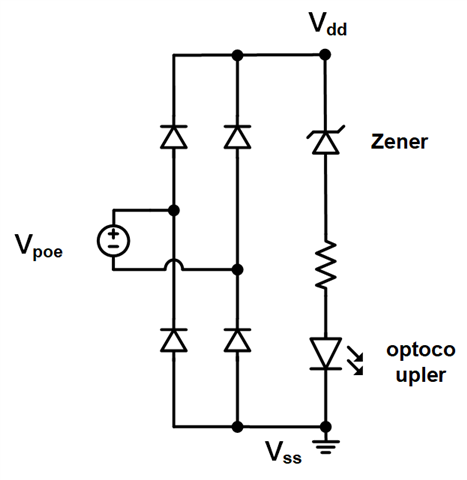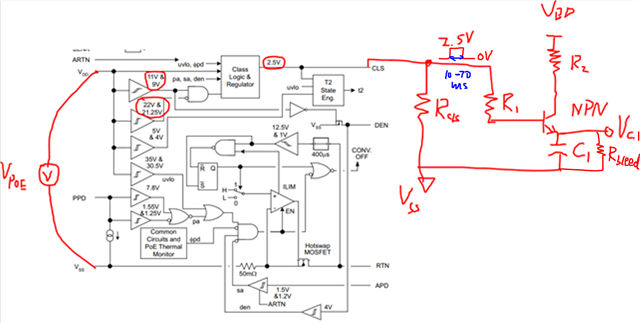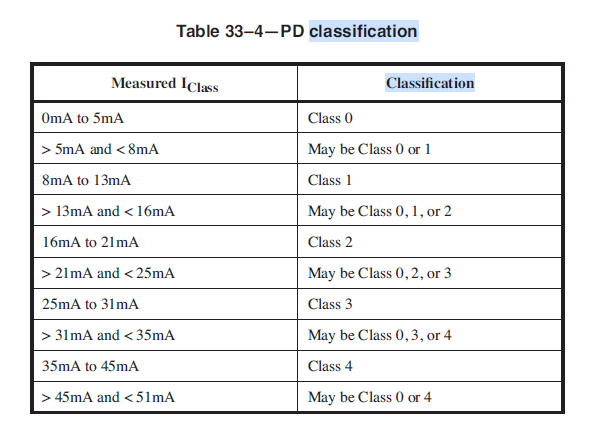Our end customer asked for a feature to detect the difference modes as the device was powered by 802.3af PSE or 802.3at PSE or passive PSE injector.
If TPS23754 could not achieve this, any recommendations to achieve this with some logic parts, like pulse detection to latch the detected handshake pulses and then feedback to CPU through a photocoupler?
Thanks,
Jeff





